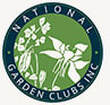The following information is taken directly from the
“Handbook For Flower Shows”, Revised 2017, National Garden Club, Inc.
“Handbook For Flower Shows”, Revised 2017, National Garden Club, Inc.
WGCF members are invited to submit examples of the various design types for inclusion on this page.
Email them to [email protected]
Email them to [email protected]
The four design types are:
|
AMERICAN TRADITIONAL DESIGN TYPES
|
|
|
CREATIVE DESIGN TYPES
|
|
|
TABLE DESIGNS
|
|
|
ADVANCED DESIGN TYPES
|
|
|
|

The Wisconsin Garden Club Federation founded in 1928 is a charter member of the National Garden Club organization. As an organization, we are proud of our heritage of developing relationships with fellow gardeners, learning, and gardening for good in our communities.
|